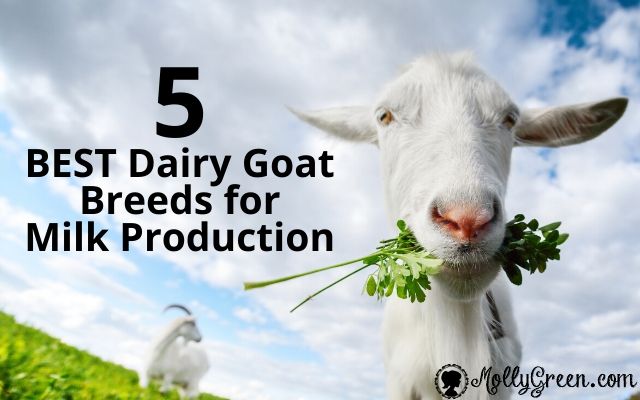
Dairy goats are easy animals to raise, plus they produce delicious milk. Goat milk is healthy for your family and selling goat milk is a decent income.
So, what are the 5 best dairy goats for milk production? Today, we are going to dig into some facts about dairy goats, their milk and the best dairy goats for milk production!
How Much Milk Does A Dairy Goat Produce Every Day?
A good dairy goat, or doe, produces between 11 to 22 cups of fresh milk every day. However, there are many variables that can affect how much milk she might produce. From food, nutrition, the weather and just what mood she’s in, your dairy goat may produce a lot of milk one day and not as much the next. Let’s dig into what effects how much she might produce.
A dairy goat’s milk production depends on:
Food
Good quality grain and hay are essential for lots of milk, The hay should be from legumes with 15-20% protein. Alfalfa hay is best since it has more protein than other hays. You doe should also be fed 2 to 3 pounds of grain every day. Grains such as corn, oats, and soybeans are best.
Care
The care given your dairy good while she is dry is especially important. Give the doe a dry period every year around the same time she’s bred. It should be at least two months long. Those breeds that produce more milk need longer dry periods so their body can replenish nutrients lost in milk production. After the dry period, some do produce up to 75% more milk. Remove grain from your doe’s diet during the dry period. Add more grass hay. Also give her calcium, phosphorus, and salt. Resume feeding her regularly during her last month’s gestation.
Cleanliness
Keep your goat’s stall clean. Never allow her to stand in feces, this spreads parasites and worms.
Free of parasites
When you purchase a dairy goat, choose one that is native to your area. Native dairy goats are more resistant to native parasites and diseases. They also produce more milk. Parasites are a real problem for dairy goats. Deworm your goats several times in the spring or late fall. To avoid parasites or worms, move your goats to different pastures periodically. Don’t let them graze too close to the ground where the parasites live.
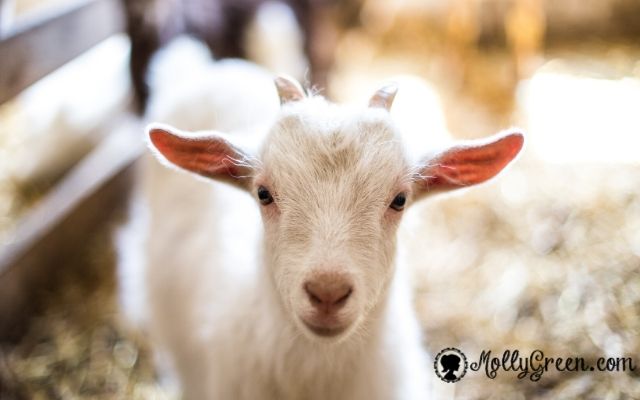
Why Goats and Not Cows?
You may be wondering, why not get a milk cow if you want milk? This is a totally valid question, and one that has a few different answers:
- Not enough land. Cows undoubtedly take a lot more land and food to sustain, which makes goats a much wiser choice if you don’t have the space you would need for a cow and don’t want to spend the money to constantly buy hay to feed them.
- Cows can be intimidating. Somehow, it’s just not as intimidating to get under a goat to milk her versus a cow. It can be a huge undertaking to calm a cow (who can easily way 1200+ pounds) and let you milk her, while it’s just a bit easier to get a goat to calm down. Though both have their challenges, the smaller the animal makes it a bit easier.
- Goat milk can often be easier to digest. As mentioned before, many people who can’t tolerate cows milk can often tolerate goat milk. So, if you have a lactose allergy, goats are the wiser choice!
- You can make more “goods” with goat milk. While there’s a lot you can do with cow’s milk, there’s a lot you can do with goat milk such as lotions, balms, soaps, and more! Plus, the label of “Goat’s Milk” lotion, soap, or whatever you are making typically makes for a better bargaining piece when you are selling your products.
At the end of the day, you have to decide if a milk cow or goat is the right choice for you. Goats are a great option for any homestead, even if you have a cow! You can add goat milk soap next to your cow butter at your farmer’s market stand, or just for your personal use.
What Are Popular Dairy Goat Breeds In The U.S?
Goats are growing in popularity in the U.S. Goats are easy to raise and adapt to any area, even a backyard. The most common breeds found in the U.S. are used for meat and milk. These dairy breeds include:
- Alpine
- LaMancha
- Nubian
- Oberhasli
- Saanen
- Sable
- Toggenburg
- Nigerian Dwarf
Let’s dig in about some of these breeds a bit more!

What Are The 5 Best Dairy Goat Breeds For Milk Production?
If you are raising dairy goats for a living, milk production is important. You really want the most bang for your buck that you can get. Depending upon the breed of dairy goat, you’ll get more milk. Some breeds just naturally produce more, but there are other factors, too. Some breeds products more buttermilk which can be vital if you do anything with the milk such as cheese, but also makes it a big selling point.
So which breed of dairy goat gives the most milk? Here are five of the best milking goat breeds:
LaMancha
LaManchas are a medium-sized goat. They are a hardy breed with an easy-going temperament. LaManchas produce an average of 1 to 2 gallons of milk a day, per goat. Their milk is around 4% buttermilk which gives the milk a nice, rich flavor. They’re easily identified because they don’t have the floppy ears you normally see on a goat.
Saanen
This goat is one of the largest of the dairy breeds. They have been known to produce as much as 3 gallons of milk a day per goat. On average, they produce around 1.5 gallons a day, but their milk is low in butterfat and protein. This means their milk isn’t the best for cheese or yogurt making, so keep that in mind when picking your breed. Sannens are white and sweet-natured but due to their larger size, they may need more pasture. Keep in mind that they produce more milk, though, so this all evens out!
Nubian
Nubians are a medium-sized dairy goat, and maybe one of the most popular choices for dairy goats on homesteads. They have adorable floppy ears and come in all colors and patterns – from solid colors to polka dots. On average, they produce around 1 gallon of milk a day but can produce as much as 2 gallons of milk in rare circumstances. Nubians’ milk is 5% butterfat, the highest fat content of all dairy goats. This makes their milk perfect for cheese, yogurt or homemade soap or lotions.
Toggenburg
The oldest dairy goat breed, the Toggenburg goat, originated in Switzerland. This dairy goat is medium-sized with a short to medium-length coat. Its color can vary from light tan to dark brown. They have distinct white ears with a dark spot in the middle plus white areas on their legs, tail, and face. Because Toggenburgs are so friendly and gentle, they’re sometimes adopted as pets. But milk production is what they do best. They produce a large amount of milk, almost 1000 gallons a year.
Alpine
French Alpine goats originated in the Alps, when they arrived in the US, they were popular because of their size and ability to produce milk. Alpines come in a range of colors-white, fawn, gray, brown, black or a combination of colors. They’re short-haired, but bucks have long hair on their spine with a noticeable beard on their chins.
French Alpines are called Alpine dairy goats. This hardy dairy goat thrives in different climates.
Alpine milk is low in fat, only 3.4% which is higher than cow’s milk. They are one of the top goat milk producers with milk production after 4 to 6 weeks of giving birth. Alpine goats average a gallon of milk per day. Alpine milk gets filtered and chilled after milking the doe. Keep it chilled at 39 degrees Fahrenheit to keep it from spoiling. If has a shelf life of three to four weeks. If you freeze it, it will last up to five weeks.
Oberhasli
Oberhasli, called the “Swiss Alpine,” originated from the mountains of Switzerland. This dairy goat breed first came to the U.S. in the early 1900s where they bred it with other goat breeds and lost its purebred status. Later, in 1936, more purebreds arrived from Switzerland. Today purebred Oberhasli dairy goats still exist. They are reddish-brown with black markings on their bodies and ears. Black stripes run down their face from eye to muzzle. Oberhasli ears are black inside and reddish-brown on the outside. This dairy goat breed is one of the best for milk production with up to 2 gallons a day.
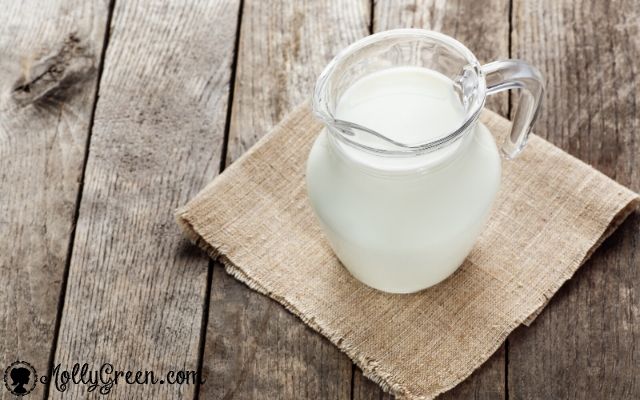
Does Goats Milk Taste Good?
Goat milk is sweet and clean tasting. Here are some reasons goat milk sometimes has a strong “goaty” flavor.
Heat
If your goat milk as a strong “goaty” flavor it could be how the milk is handled. Because it’s high in lactic acid if it’s stored in a fridge that is higher than 38 degrees, the lactic acid increases. This makes for stronger, tangy tasting milk. If you can filter the milk and get it cold quickly, and store in a fridge less than 38 degrees, you’ll get sweeter tasting milk. Fresh goat milk and fresh cows milk taste the same.
Health issues
These can also affect the way goat’s milk tastes. A low-grade infection, illness or a virus may make a dairy goat’s milk taste too strong. Mastitis, the swelling of the mammary glands, creates a chemical reaction in the milk making it goaty. Provide your dairy goats with a clean stall and fresh healthy diet for the best-tasting milk.
Stress and extreme temperatures
These can also affect the health of your dairy goat and her ability to produce good-tasting milk.
Goat milk from the grocery store has a goaty taste. The milk has been pasteurized, a process where live enzymes, bacteria, and other nutrients are killed when the milk is heated. The goat milk may also lose its fresh flavor because it contains antibiotics, steroids or medications added to it.
Can You Drink Goat Milk Straight From The Goat?
Drinking raw milk straight from the goat isn’t new. For centuries people drank milk from their dairy animals without getting sick. After the Industrial Revolution people moved into cities where they couldn’t get fresh milk. As farms grew into big businesses, there were compromises made to how the animals were treated resulting in infected milk. To make the milk safe to drink, it had to be pasteurized. Pasteurization kills off harmful bacteria, but also good bacteria and probiotics found in the milk. The good bacteria in raw milk aids indigestion. Goats milk is high in lactic acid, a natural acid good for your gut.
Milk that isn’t pasteurized can contain bacteria. E.coli, listeria, and salmonella are also dangerous intestinal illnesses that are sometimes found in raw milk.
The FDA prohibits the sale of raw milk between states, but individual states can regulate laws for the sale of raw milk. If the dairy goats are grass-fed, their raw milk will have natural antibiotic qualities that can protect it from harmful bacteria. The raw milk must be bottled and stored properly to keep it free of pathogens.
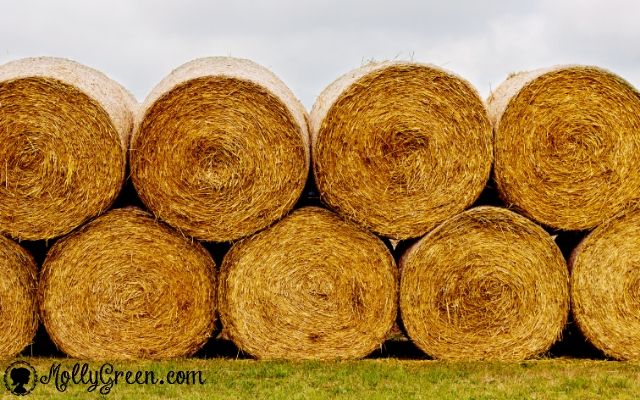
What do you feed a dairy goat?
Dairy goats need grain, hay, and water. Feed your dairy goat 2 to 3 pounds of corn, oats, soybeans or meal every day. They also like legumes like clover or perennial peanut. Dairy goats like to graze on grass, clover, or leaves.
What About Meat Goats?
Raising goats for milk or meat is a profitable business with goat meat and milk growing in popularity in the U.S. Meat and dairy goats are easy to raise, and contrary to popular belief, they don’t eat tin cans. So, what are the best goats for meat?
5 Best Goat Breeds For Meat
Spanish
The Spanish goat originated in Spain. From Spain, they were imported to Mexico then later brought to the United States. Today, they’re found all over the world. Spanish goats are low maintenance and adapt well to most climates. One unique advantage of this meat goat is that it can be bred offseason.
People confuse Spanish goats with the word “Spanish” which is used to describe a crossbred and indistinguishable breed of goat in the Southwest. But the Spanish goat exists as a purebred. This breed grew as farmers learned to appreciate its ability to produce lots of meat. Some Spanish goats are also being crossbred for cashmere.
Spanish goats range in colors and patterns. They weigh anywhere from 50 to 200 pounds. This meat goat has big ears, that lay horizontal on their heads.
Black Bengal
The Black Bengal goat meat is the best tasting goat meat in the world. Originally from Bangladesh, this meat goat lives in West Bengal, Bihar, and India. Their hair is black and they’re smaller in stature than most goats. Its ears are on top of its head and small to medium sized horns. Black Bengal goats produce as much as 24 pounds of meat with coats also sold, which can weigh up to 44 pounds. They give birth to 2 to 3 kids twice a year.
Boer
Boers are large-sized goats, some males weighing a massive 300 pounds. They’re hardy, disease-resistant and reproduce well. Originally from South Africa, this goat breed is popular for its meat. Their name comes from the Afrikaans word for a farmer. Boer goats have white bodies and brown heads. Their ears are long and hang down on the sides of their heads. They adapt well to a variety of climates. Because they are so easygoing, many people keep them as pets.
Kiko
Created in New Zealand only 40 years ago, Kiko was a new breed of meat goat. They created this breed to produce meat by breeding the Saanen, Toggenburg and Anglo Nubian goat. Imported to the U. S, they’re known to be hardy, a parasite resistant breed of goat. Kiko goats are hardy and tolerate all kinds of climates. They’re low maintenance, produce good tasting lean meat. Their name means “meat” in Maori, the native language in New Zealand. Known for their amazing meat, they’re the star of American meat goat production. Kikos have a white coat of long hair. Bucks have wide sweeping horns that twist at the tips. Does weigh anywhere from 100 to 150 pounds and bucks can pack 250 to 300 pounds on their medium, muscular frame.
Rangeland
Rangeland goats originated in Australia. This hardy meat goat is tall and wide with short hair. Rangelands are best identified by their mid-sized hanging ears and a black, brown or white coat. They are a strong, hardy goat, tolerant of hot, dry climates. Today, 90% of the goat meat eaten comes from Rangeland goats. Laidback and easy to care for, Rangelands do not need shearing. This meat goat is one of the best for commercial goat farming businesses. Rangelands are easy breeders, and often bred with Boers for meat.
What Should I Feed My Meat Goat?
Meat goats can eat a mixture of corn, hay, barley, dry bean screening, dried or wet distillers grains, beet tailings, and cornstalks. Pick a quality feed grain designed for meat goats. The feed should include a high amount of protein, at least 14%. You can start your young kids on this diet right away.
Mixing Dairy and Meat Breeds – Can You Do It?
If you are wanting both dairy and meat goats on your farm, you can definitely have both! Goats are pack animals and therefore love to have “friends”! You can beat the loneliness aspect of having just one or two goats by getting several different breeds of dairy and/or meat breeds.
This is a great way to diversify your herd and your business if you are taking your milk and meat to market!
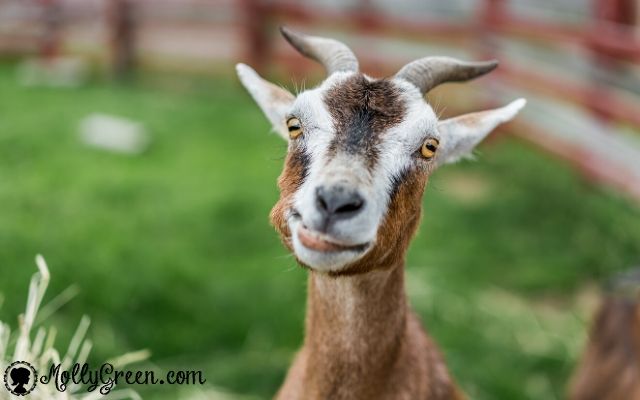
Wrapping Up
In conclusion, dairy goats can be an excellent source of milk for your homestead or business. Whether you decide to raise goats for milk, or for meat, goats are a wonderful addition to your homestead that you absolutely must look into!
Deciding on the right goat for your homestead may take some time, so be patient! If you don’t have a lot of land, you may decide to go with a Nubian whereas if you want the highest possible milk supply and don’t have a limit on your land you probably will choose a Sannen.
Also, remember that goats are pack animals, so having some milk and meat breeds together could be a great solution to keep each other occupied and have both types of goats at the same time!
If you are looking for some more information about Dairy Goat breeds, visit these resources:




